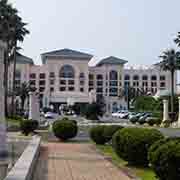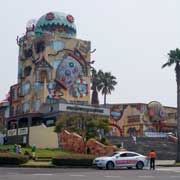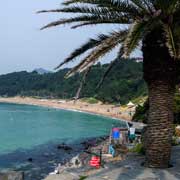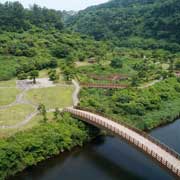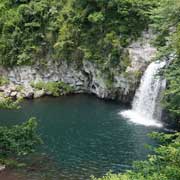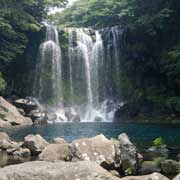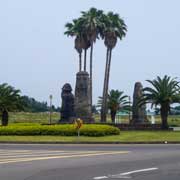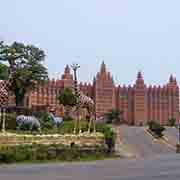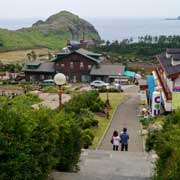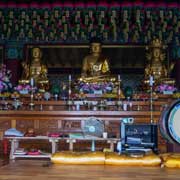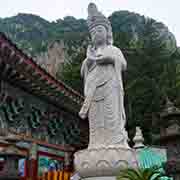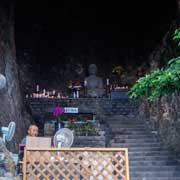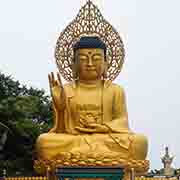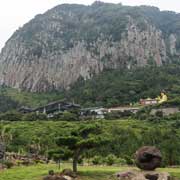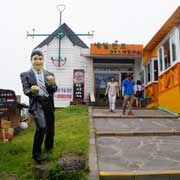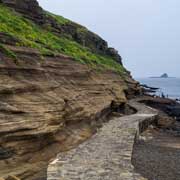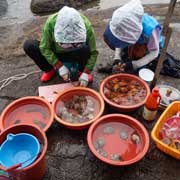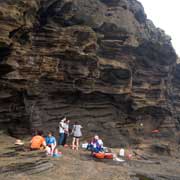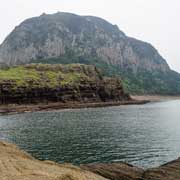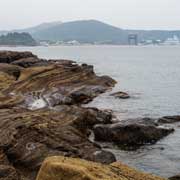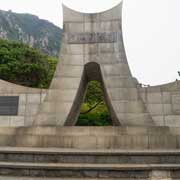Photos of the south west coast of Jeju island, Jeju Province, Korea
The south west coast of Jeju island, Jeju Province
Jeju-do, Jeju Island, south of the Korean peninsula, was the first land in Korea to be sighted by Europeans in the 17th century; the Dutch were sailing in these waters between their colony of Formosa (now Taiwan) and Dejima, their trading base in Nagasaki, Japan. A Dutch sailing ship, the Quelpaert, was blown off course, and their crew sighted and named the island after their boat; the name stuck. Korea was a closed society, and westerners were not allowed to land; however, in August 1653, another Dutch ship, the Sperwer (= “Sparrowhawk”), was wrecked on the Yongmeori coast in the southwest of the island. Hendrick Hamel, a bookkeeper with the Dutch East India Company (VOC) and thirty-five other crewmates, survived the deadly shipwreck and, after spending almost a year on Jeju-do in the custody of the local prefect, were taken to Seoul, the capital of Joseon Korea. They were not allowed to leave the country, but in September 1666, after thirteen years in Korea, Hamel and seven of his crewmates managed to escape to Dejima, Japan, in a boat they had purchased.
you may then send it as a postcard if you wish.
From September 1666 to October 1667, in Dejima, Hendrick Hamel wrote the story of his time in Korea, and this became the first account of life in Joseon era Korea to the outside world. Because of this, Hamel is now a hero in Korea. A replica of his ship was built on the Yongmeori coast below Mt. Sanbangsan, where the original was wrecked. However, it has been renamed the “Hamel” and has an exhibition inside telling the whole story. There is also a “Dutch” house” (painted orange, complete with a windmill on the roof), selling Dutch souvenirs and even a statue of Guus Hiddink. This Dutch football coach helped the Korean World Cup Soccer Team achieve one of four countries standing in the final playoffs in 2002. Nearby is a monument honouring Hendrick Hamel (1630-1692).
The Yongmeori coast here has spectacular rock formations and is overlooked by 395 metres high Mount Sanbangsan with Sanbaggulsa, an ancient temple located in a natural cave on the mountain’s slopes: it is the oldest temple Buddhist monastery on the island. There is also a new temple below the ancient cave temple. And about 10 kilometres east of this is the Jungmun Tourist Complex, a high-class tourism resort with numerous entertainment facilities - the sumptuous Lotte Resort Hotel, the beaches, the Cheonjeyeon Falls and exotic looking structures like Ripley’s “Believe It or Not!” museum and the Museum of Africa, modelled on the Grand Mosque of Djenné in Mali, with life-size models of African wildlife outside and a great collection of African art inside.



